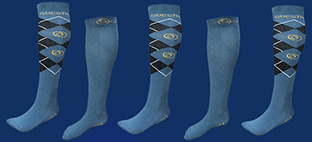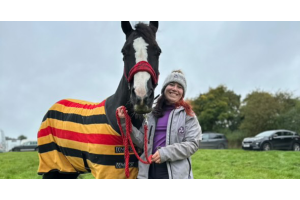Bathing Your Horse: A Guide
It's important to keep your horse clean and free of dirt and debris. Not only does this help them look their best, but it also helps prevent skin problems and infection. Bathing your horse regularly is an important part of horse care.


Why You Should Bathe Your Horse
Most horse owners do horse bathing for two reasons: cleanliness and health.
A healthy coat is shiny and free of dirt and debris. It should also be free of any sores, scabs, or bald spots. If your horse has any of these problems, you may need to consult your veterinarian.
There are several ways to wash your horse. The most common method is to follow a cleaning guide or to use a hose or power washer with warm water and mild soap or shampoo. You can also use a bucket and sponge.
Whichever method you choose, be sure to wash your horse thoroughly to remove all soap residue.
Horse Bathing Kit
Sponges
Wash your horse's body with a large sponge and their face and genitals with two smaller sponges. You can use either synthetic or genuine sea sponges. If you use liniment or body braces after exercising your horse, keep a sponge for that product exclusively. Don't exchange sponges between horses to avoid spreading contagions.
Sweat Scraper
A sweat scraper, available in a variety of ergonomically inventive forms ranging from simple aluminium to brightly coloured plastic, is a vital tool for removing extra water from your wet horse. Its application accelerates the drying process.
Mitt
In horse bathing, use gloves or Tail Tamers Jelly Scrubber for gently scrubbing on particularly dirty regions. Soft rubber, plastic, sheepskin, and a number of other materials can be used to make mitts. Some mitts can serve double duty, eliminating sweat stains and loosening dirt from a horse's legs during routine groomings.
Shampoos
A wide range of formulations developed for use on horses is available. You'll find one that suits both your own preferences and the needs of your horse. Consider your horse's skin sensitivity and surface coat condition. You might choose to use a shampoo with natural ingredients, one with herbs to reduce discomfort or one that targets stains or dry skin.
Medicated Shampoos
Contains active chemicals to treat skin diseases such as scratches and dermatitis. For the best results, make sure to carefully follow the recommendations for medicated shampoos. Our product experts urge that you visit your veterinarian before using a medicated shampoo to ensure that you are addressing your horse's health condition effectively.
Colour Enhancers
These are shampoos that contain compounds that help to bring out the natural colour of your horse's coat. Colour boosters are popular among horse owners who are getting their animals ready for a show. If you decide to use a colour enhancer, be sure it matches the colour of your horse's coat.
Conditioners
Some shampoos, by eliminating natural oils, can be dry to a horse's skin and hair. Conditioners can help to replenish moisture that may have been lost during the shampooing process.
Hair Polish
Often used on a horse's mane, tail, and other parts immediately after bathing, especially if the horse has to look its best for an event the next day. Hair polish, particularly silicone-based products, attaches to individual hairs to help generate gloss, resist discolouration, and repel dust. Coating spots where the tack is worn are crucial because it keeps the horse's hair greasy.


Things to keep in mind when bathing your horse:
- Make sure you have all the supplies you need before you start, including a brush, shampoo, water, and a lead rope.
- Choose a location that is safe and comfortable for both you and your horse. A wash rack or cross ties are ideal.
- Be sure to start by brushing your horse's coat to remove any dirt and debris. This will make it easier to wash your horse and prevent the soap from irritating his skin.
- Wet your horse down thoroughly with warm water. Be careful not to get water in their eyes, nose, or ears.
- Apply shampoo to your horse's coat and work it in well. Be sure to avoid any sensitive areas such as the eyes, nose, and genitals.
- If you are using a hose or power washer, start with the legs and work up the body. Be careful not to aim the spray directly at your horse's face or underbelly.
- Rinse your horse completely with clean water.
- After horse bathing, you should apply a conditioner to your horse's coat. This will help to prevent tangles and make grooming easier.
- Dry your horse off with a towel or cloth. If it's cold outside, you may want to use a horse blanket to help them stay warm.
Bath time is an excellent opportunity not only to bond with your horse but also to inspect for any health issues that may have escaped your notice during routine grooming.
It is critical to gather the necessary tools and cleaning guides for the job. Only apply a shampoo designed exclusively for horses, since other treatments may deplete critical natural oils and dull her coat. With all of the horse shampoo options on the market, it can be hard to decide which one is right for your horse. Be sure to take into consideration your horse's coat type, any health conditions that need to be treated, and what kind of event you're preparing for.
Groom them thoroughly before doing horse bathing to remove unwanted dirt and hair. Because soaking and drying hooves can promote cracking, you should also treat them with a hoof conditioner.
For the cleaning guide start carefully; most horses like a bath, but for those who are anxious, a pail of water instead of a hose, washcloth, and sponge may be appropriate at first. Do not expose a horse to bathing on the coldest day of the year with an icy blast from the hose; instead, ask yourself if you would feel comfortable bathing in the conditions you're introducing your horse to. If not, a quick wipe-down with a warm, moist cloth should suffice until the weather improves.
After following the cleaning guide and when your horse has been cleaned and rinsed, make sure your horse is thoroughly dry before returning her to her stall or enclosure. A freshly showered horse will almost certainly roll, and you do not really want all of your hard work to be for nought as your clean, wet horse transforms before your eyes into a muddy mess.
Bathing your horse can be a fun and bonding experience, as well as an opportunity to inspect your horse for any health issues. By following this guide, you can ensure that bathing your horse is safe and enjoyable for both of you!








